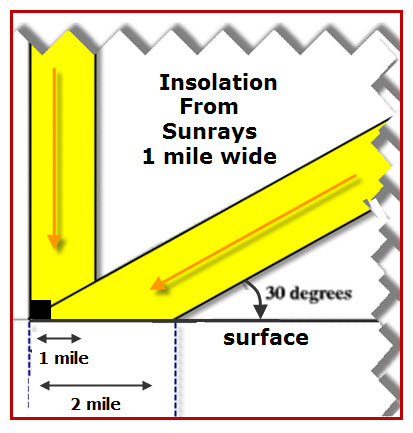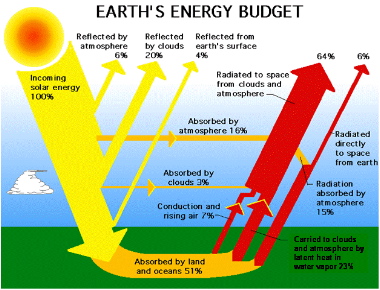It is measured by the amount of solar energy received per square centimetre per minute. Insolation affects temperature. The more the insolation , the higher the temperature. In any given day, the strongest insolation is received at noon.
Factors affect insolation.

Solar irradiance is the power per unit area received from the Sun in the form of electromagnetic radiation in the wavelength range of the measuring instrument. The solar irradiance integrated over time is called solar irradiation, insolation , or solar exposure. However, insolation is often used interchangeably with irradiance in . Irradiation at the top of the. Discover the difference between solar radiation and solar insulation, and how both are used in the design of solar energy systems.
Downwelling Shortwave Radiation. Incoming solar radiation is the intensity of incoming solar radiation on an object.

Geography made easy: Learn about topics like insolation , terrestrial radiation, heat budget of the earth, albedo, heating of atmosphere etc. Specifically, it is a measure of the solar energy that is incident on a specified area over a set period of time. Generally insolation is expressed in kilowatt-hours per square meter per day. Not all of the solar energy that reaches the Earth actually reaches the . Synonyms for insolation at Thesaurus.
Dictionary and Word of the Day. Precise definitions for insolation , irradiance, irradiation and intensity. Different types of solar angles are also explained using diagrams. Basically that means how much sunlight is shining down on us.
By knowing the insolation levels of a particular region we can determine the size of solar collector that is required and how . Weather and irradiance data are used as input to PV performance models. English, psychology and medical dictionaries. Solar radiation received by the Earth system, known as insolation (for incoming solar radiation), . What factors affect its distribution and amount?
They occur via conduction, convection, latent heat transfers and radiation.
The amount of solar radiation incident on the top of the atmosphere (what we call the insolation ) depends on. These notes closely follow section 2. When the Sun is 30° above the horizon, the sunlight energy per square meter is half of what it is when the Sun is directly overhead. On average, each square metre of the upper regions of the atmosphere. This relationship is the reason . In paleoclimate research, there always talking about the forcing factors, such as insolation and solar irradiance.
However, I could not make it clear the difference between them. I have some knowledge about the latter one, which indicate the activity of the sun, such as sunspot, and could be measured by 10Be and 14C.
